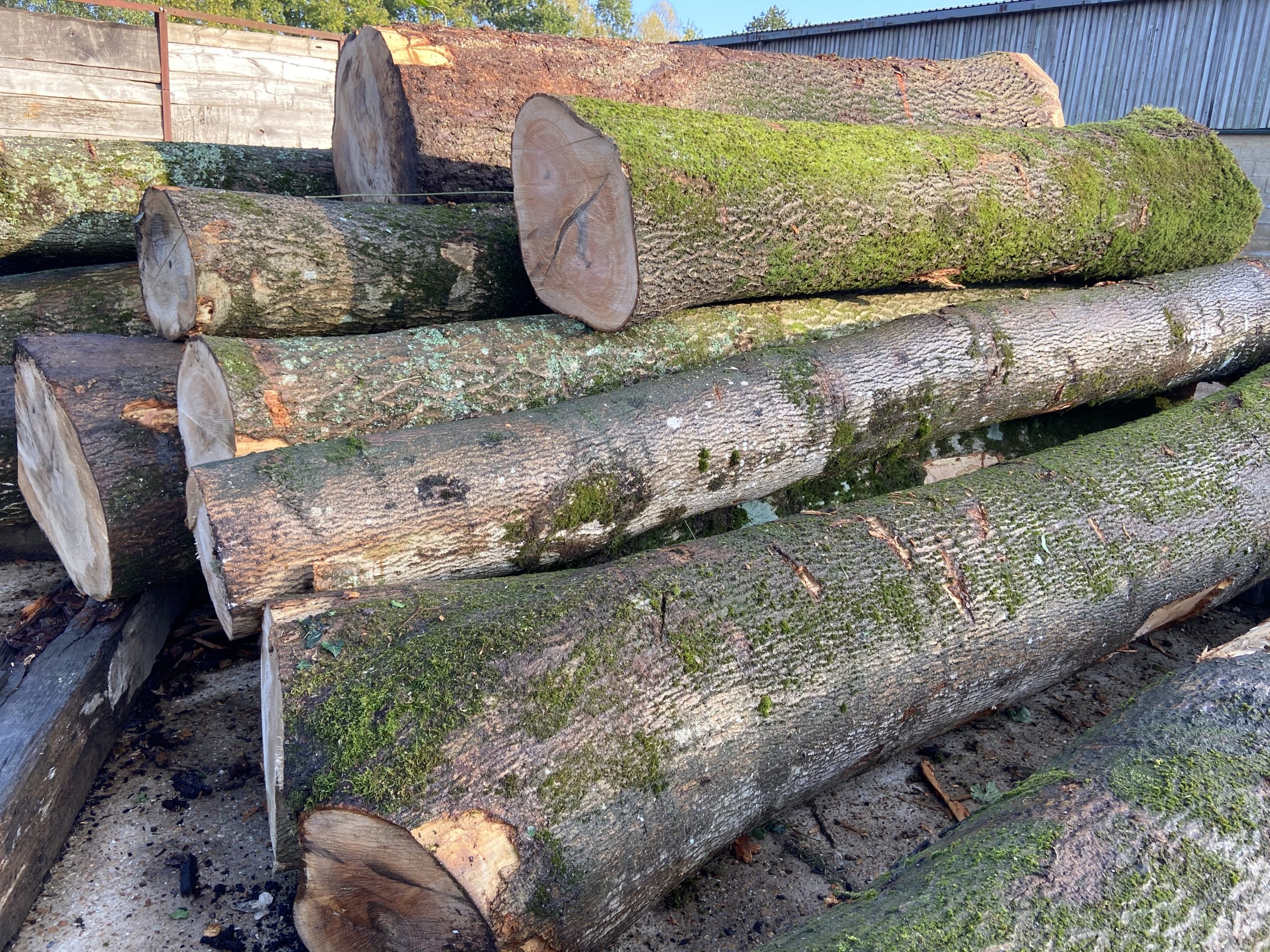Don’t Waste Timber: Making The Most of Ash Dieback
By Dave West
A number of pests and diseases affect trees across the UK but one of the most visible and severe is Ash Dieback (Hymenoscyphus fraxineus).
Ash Dieback is a particularly destructive disease in Ash trees, especially our native species, the Common Ash (Fraxinus excelsior). Caused by a fungus and also known as `chalara dieback’ or `chalara fraxinea’, it is one of the most significant tree diseases since Dutch Elm disease was first identified in the 1960s.
As supporters of Grown in Britain since its inception and as keepers of a GiB Chain of Custody certification, this plant health crisis has particularly concerned us over the years. Using British and local timber specifically enables us to get Grown in Britain timber to the market place, which is something we are working hard to maintain as infected trees are preventatively felled across the country to combat Ash Dieback.
Recognising Ash Dieback
The disease can be seen initially though the blackening and wilting of leaves and shoots in mid to late summer. Often, lesions can be seen where branches join the trunk of the tree; there will be visible dying of branches often from the top down.
Ash species are prevalent across the UK and the disease is evident in most areas of the UK. Experience in Europe has shown that it will kill young and coppiced trees very quickly, with more mature trees resisting it for some time, though prolonged exposure will ultimately kill the tree.
Unfortunately, there is currently no cure for this disease, although work and forest research are underway to try to find resistant strains of this species.
Impacts of Ash Dieback
There is a safety issue with Ash Dieback in that it will weaken trees and make the structure of the timber become brittle.
Across the country, there have been very visible programmes of felling trees where there is a risk to the public, especially along roadsides, footpaths and parks. The cost of this across the country is enormous, particularly because different techniques of felling have to be used if the trees are not safe for tree surgeons to climb.
Sadly, the extent of damage from Ash Dieback means we are seeing many of these beautiful tree species disappear from our countryside.
Making The Most of Ash Timber
But this doesn’t mean that all the resulting Ash timber goes to waste.
Ash is a beautiful timber, typically light in colour with an attractive grain. Often, the heart can develop an area of `Olive’ coloured timber, adding to its character. The timber is strong, easy to work and can be easily stained or treated.
Ash can be used for a variety of purposes – flooring, joinery, furniture – and is often used to manufacture sports items such as cricket stumps and baseball bats. Clearly, Ash is a versatile and attractive species.
Currently, we are taking part in a felling preventative programme, where we try to identify good-quality local timber where the trunk of the tree is still sound despite outlying damage. So far, we have purchased three parcels of Ash all from within 15 miles of our sawmill!
It is important that we make the most of trees that have been growing for decades, many for over 100 years. In the industry as a whole, we tend to lament unnecessary wastage and environmentally, it makes sense: trees absorb carbon as they grow and store it as wood, making timber products a carbon store rather than a carbon emitter.
We currently have some Ash already milled into plank 18 months ago, waiting to be kilned. We will be shortly milling the rest and air-drying it ready for kiln-drying early next year.
As an industry, we need to make the most of a bad situation and use this beautiful species, turning it into something beautiful that will be around for another 100 years.
Case Study – Ancient Ash Tree
To illustrate our previous comments on the economical use of timber, we wished to explain the respect we ought to show to timber and older trees in general – these resources that are renewable only once a century or so.
The picture above shows a recent purchase: an Ash tree that has been growing for 117 years! This we were able to determine by counting the rings on the round. This means the tree was a mere sapling in 1903. It got us thinking… what else happened in 1903?
- The British Admiralty announces plans to build a naval base at Rosyth.
- The first west-east transatlantic radio broadcast is made from the United States to England (the first east-west broadcast having been made in 1901).
- Ford Motor Company is founded by Henry Ford with $28,000 in cash from twelve investors.
- The first Tour de France bicycle race is held; Maurice Garin wins it.
- American motorbike brand, Harley-Davidson was founded in Wisconsin
- The first box of Crayola crayons is made and sold for 5 cents. It contains 8 colors; brown, red, orange, yellow, green, blue, violet and black.
- Bing Crosby, Bob Hope and George Orwell are born.
So, next time you see a grown Ash tree, give it a quiet nod. It’s been around a lot longer and seen a lot more than most of us will get to in our lifecycle.
WL West & Sons Ltd is a timber merchant and sawmill business with 150 years of experience. We provide a wide range of timber products and supplies. We also build and install custom projects for our customers.
For more news, tips and updates, follow us on Facebook, Twitter, or Instagram.
For entirely finished products, timber supplies or woodworking tools, have a look at our Retail Shop.
Liked this article? More like this:
Best Woodworking Machinery – The MEBOR HTZ 1400 Extreme 20 Sawmill
Post-Brexit Impact on UK Timber Trade – An Expert’s Thoughts







